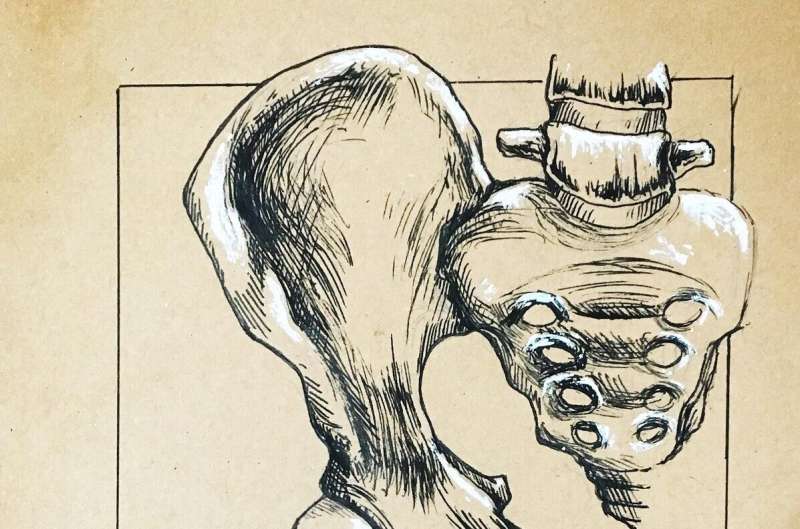Pelvic Floor Dysfunction: Essential Information for Women

Pelvic floor dysfunction affects up to half of women and can be caused by pregnancy, childbirth, or intense exercise. Learn how to prevent and manage this common condition with effective strategies and exercises.
Did you know that approximately half of women in the UK will experience symptoms related to pelvic floor dysfunction at some point in their lives? For women involved in high-impact or intensive physical activities, this risk increases, with studies showing up to 63% may be affected.
The female pelvic floor is a sophisticated network of muscles and ligaments forming a supportive hammock from the front of the pelvis to the tailbone. These muscles play a crucial role in supporting vital organs like the bladder, bowel, and uterus. They also wrap around the openings of the urethra, vagina, and anus, working harmoniously with the diaphragm, abdominal, and back muscles to maintain posture, control continence, and contribute to core stability—the foundation of overall body strength.
Throughout life's stages, various events can strain the pelvic floor. Pregnancy, for example, increases intra-abdominal pressure due to uterine enlargement and growth of the baby, leading to stretching and weakening of these muscles. Childbirth, especially vaginal delivery, can cause direct injury or trauma to pelvic tissues, resulting in issues like perineal tears.
Interestingly, pelvic floor problems are not solely linked to pregnancy or childbirth. Intense physical activities and sports, even among women who have not experienced pregnancy, can also contribute to dysfunction. Repeated strain from heavy lifting, high-impact exercises, or activities that elevate intra-abdominal pressure can gradually weaken these muscles, particularly if they are not properly conditioned.
Common symptoms of pelvic floor dysfunction include urinary or fecal leakages during coughing, sneezing, or exercising, a sensation of heaviness in the lower abdomen or vaginal area, painful intercourse, bowel habit changes, and visible vaginal bulging, which may indicate prolapse. Such issues can also impact emotional well-being, leading to embarrassment, anxiety, low confidence, and avoidance of activities—significantly affecting quality of life.
Preventing pelvic floor dysfunction is achievable and often possible with proactive measures. Maintaining a healthy weight, staying active, and practicing good bladder habits—like not delaying urination and preventing constipation through a high-fiber diet—are vital strategies. Regular pelvic floor exercises, or Kegel exercises, are highly effective in strengthening these muscles. To perform them:
- Imagine stopping yourself passing wind—squeeze and lift the muscles around your back passage.
- Then, simulate stopping urination mid-stream—engage those muscles.
- Lift both sets of muscles upwards, as if pulling them into the vagina.
- Hold for a few seconds and relax. Repeat regularly.
Consistent training of the pelvic floor enhances resilience, aiding recovery from injury and reducing the impact of aging, childbirth, or strenuous activities. Strengthening these muscles can significantly improve symptoms and overall pelvic health.
Supporting your pelvic floor not only improves physical function but also boosts confidence and quality of life. Incorporate regular exercises, adopt healthy habits, and consult healthcare professionals if experiencing symptoms to maintain optimal pelvic health.
Stay Updated with Mia's Feed
Get the latest health & wellness insights delivered straight to your inbox.
Related Articles
Australian Nurses Lead Innovative Approach to Combating Skin Cancer Crisis
Australia's highest melanoma rates are prompting a nurse-led model for early skin cancer detection, especially in rural areas, aiming to save lives and reduce healthcare disparities.
Rising Concerns Over the Overlooked 'Silent Epidemic' of Stimulant Use Amidst Opioid Crisis
A new study reveals a growing, yet under-recognized, epidemic involving stimulant drugs during the opioid crisis, highlighting the need for increased public awareness and targeted interventions.
Genetic Mutation Linked to Severe Paralysis After Mild Infections in Children
Research has uncovered a genetic mutation in the RCC1 gene that causes severe nerve damage and paralysis in children following mild infections, offering new hope for diagnosis and treatment.
Are Pediatricians Recommending Vaccines for Profit? Debunking the Myths
Exploring the reality behind vaccine recommendations in pediatric care, this article debunks myths of pediatricians profiting from vaccines and highlights the scientific basis for immunization protocols.



